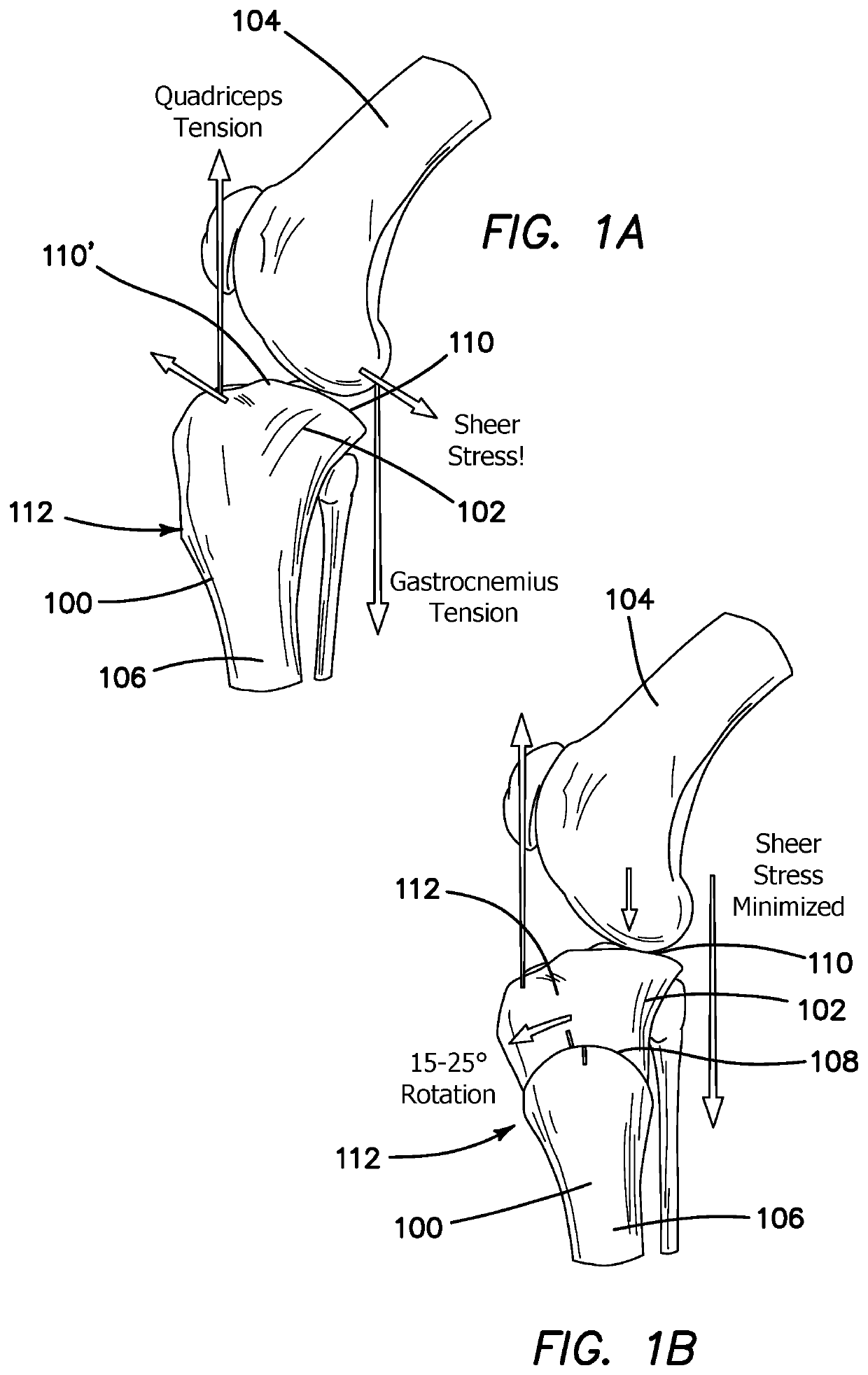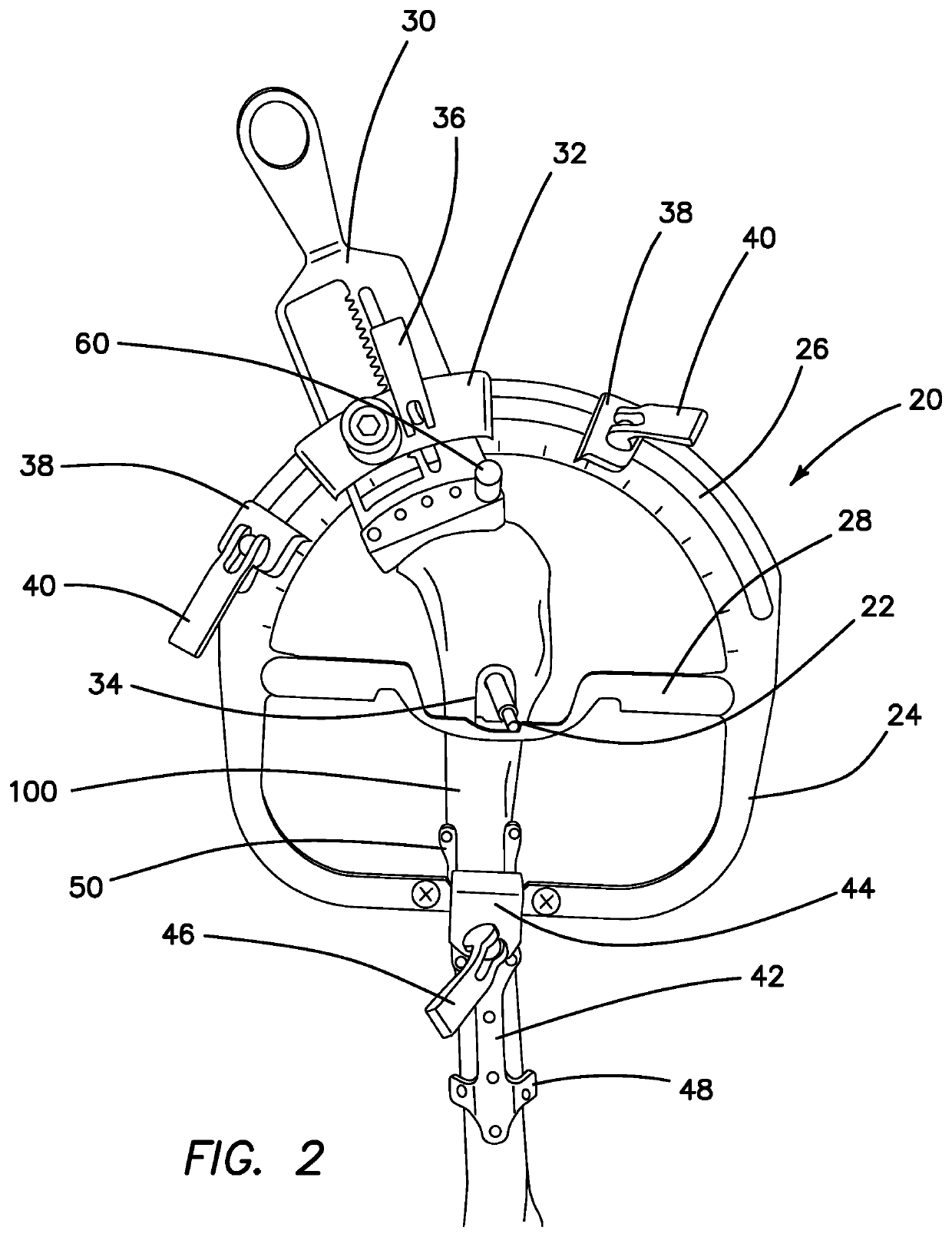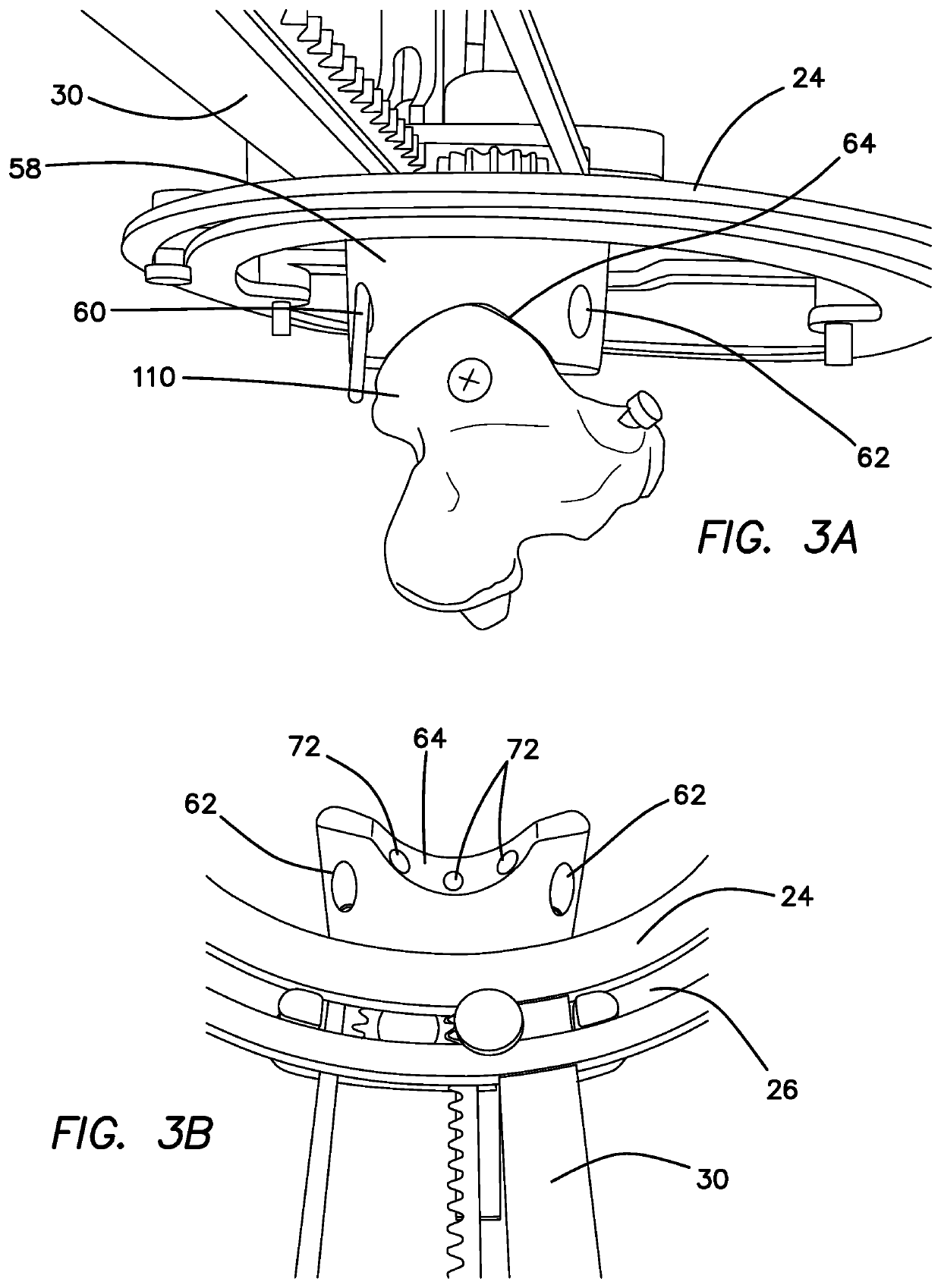Method and Apparatus for Treating Cranial Cruciate Ligament Disease in Canines
a cranial cruciate ligament and canine technology, applied in the field of surgery for the treatment of cranial cruciate ligament disease in canines, can solve the problems of limiting the extension further protecting of the canine knee, unable to combine hyperextension with high impact, and unable to achieve the common knee injury mode in humans, etc., to achieve balanced permanent stability
- Summary
- Abstract
- Description
- Claims
- Application Information
AI Technical Summary
Benefits of technology
Problems solved by technology
Method used
Image
Examples
Embodiment Construction
[0062]The current invention is a surgical guidance system (SGS) or kit 1 and a method for performing a cruciate pivot osteotomy, both of which are for surgically treating canine cranial cruciate ligament disease. FIGS. 1 and 1B are illustrations of a canine stifle comprising a tibia 100 and a femur 104 before and after performing a cruciate pivot osteotomy using the current SGS 1, respectively. The present invention provides a fast, accurate, and reliable means for performing an osteotomy 108 on the stifle of a canine, thereby allowing for a leveling of a proximal portion 102 of the tibia 100 relative to a distal portion 106 of the tibia 100. The current system and method further compresses the osteotomy 108 while providing an accurate template for a plate 80 which is then placed and affixed to the tibia 100 through a plurality of bone screws.
[0063]The current SGS 1 comprises a bi-planar geometry that will provide torsional stability when treating cranial cruciate ligament disease w...
PUM
 Login to View More
Login to View More Abstract
Description
Claims
Application Information
 Login to View More
Login to View More - R&D
- Intellectual Property
- Life Sciences
- Materials
- Tech Scout
- Unparalleled Data Quality
- Higher Quality Content
- 60% Fewer Hallucinations
Browse by: Latest US Patents, China's latest patents, Technical Efficacy Thesaurus, Application Domain, Technology Topic, Popular Technical Reports.
© 2025 PatSnap. All rights reserved.Legal|Privacy policy|Modern Slavery Act Transparency Statement|Sitemap|About US| Contact US: help@patsnap.com



